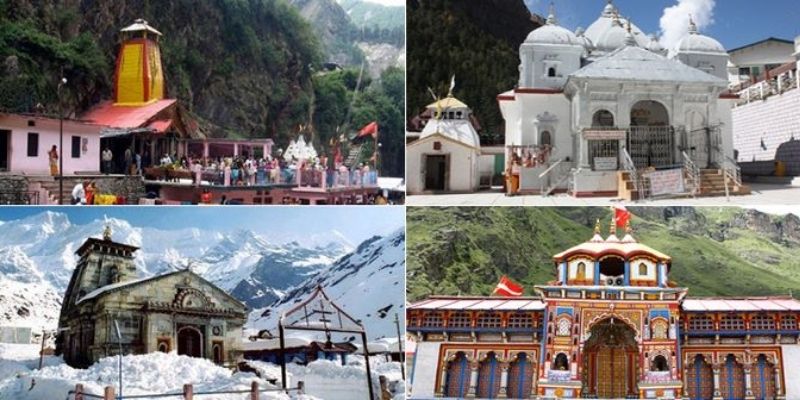
Solo Travel Char Dham Yatra in July: Safety & Itinerary Tips
Uncategoried
Solo Travel for Char Dham Yatra in July: Safety & Itinerary Tips
Embarking on a solo Char Dham Yatra is a deeply personal and transformative experience. While the solitude can enhance spiritual reflection, traveling alone in July, during the monsoon season, requires extra vigilance and meticulous planning. Here’s a comprehensive guide to ensure a safe and fulfilling solo pilgrimage.
Why Solo Travel in July?
- Fewer Crowds: Compared to peak season (May-June), July generally sees fewer pilgrims, allowing for more peaceful darshan and easier navigation.
- Lush Landscapes: The monsoon transforms the Himalayas into vibrant green, offering breathtaking views.
- Personal Pace: You can travel at your own speed, spending more time at places that resonate with you.
Key Challenges for Solo Travelers in July:
- Road Conditions: Landslides and road blockages can be more daunting when traveling alone.
- Isolation: In remote areas, communication and immediate assistance might be challenging.
- Accommodation: While often cheaper, solo travelers might prefer verified, safe accommodations.
- Health Concerns: No one immediately available to assist if you fall ill or sustain an injury.
- Safety & Security: Especially for solo female travelers, exercising extra caution is vital.
Safety Tips for Solo Travelers in July:
- Inform Someone: Share your detailed itinerary (including daily stops, hotel names, and expected arrival times) with a trusted family member or friend back home. Update them regularly.
- Carry Identification & Documents: Keep multiple copies of your ID (Aadhar, Voter ID), Yatra registration, and emergency contacts in waterproof pouches.
- Stay Connected: Ensure your phone is fully charged. Carry a high-capacity power bank. Consider carrying a spare SIM card of a different network for better connectivity in remote areas.
- Emergency Contacts: Save all emergency numbers (Police 112, Ambulance 108, District Administration helplines, hotel numbers) on speed dial.
- Pack Light & Smart: Essential items only. Waterproof backpack, sturdy walking shoes with good grip, quick-dry clothing, and a first-aid kit.
- Trust Your Instincts: If a situation or person feels unsafe, remove yourself. Avoid walking alone in isolated areas, especially after dark.
- Avoid Hitchhiking: Stick to registered taxis, buses, or shared jeeps from official stands.
- Eat & Drink Safely: Stick to boiled or bottled water. Eat hot, freshly prepared food.
- Be Aware of Surroundings: Pay attention to weather warnings, local advisories, and road conditions.
- Consider a Guide/Porter for Treks: For Yamunotri and especially Kedarnath, hiring a local guide or porter (even if you carry your own bags) can provide an extra layer of safety and local knowledge.
Suggested Itinerary Approach for Solo Travel in July:
Instead of a rigid day-by-day plan, adopt a flexible approach:
- Buffer Days: Factor in at least 1-2 buffer days for unexpected delays due to weather or road closures.
- Start Early: Begin your daily travel early in the morning to avoid heavy rainfall that typically occurs in the afternoons.
- Base Camps: Plan to stay in larger towns like Uttarkashi, Guptkashi, or Joshimath as base camps, which offer more amenities and better connectivity for checking road conditions.
- Night Halts: Always plan to reach your night halt before dark.
- Flexibility with Dhams: If one route is severely affected, consider visiting the accessible Dhams first and returning later for the problematic one if time permits.
Sample Flow (Flexible):
Day 1: Arrive Haridwar/Rishikesh. Relax, acclimatize, collect Yatra registration.
Day 2-3: Travel to Barkot/Janki Chatti for Yamunotri.
Day 4-5: Travel to Uttarkashi/Gangotri.
Day 6-8: Travel to Guptkashi/Sonprayag for Kedarnath. (Factor in extra time for potential heli-related delays or trek).
Day 9-10: Travel to Joshimath/Badrinath.
Day 11-12: Return to Rishikesh/Haridwar.
Solo travel for Char Dham in July is an adventure in itself. By prioritizing safety, staying informed, and embracing flexibility, you can have a deeply meaningful and unforgettable pilgrimage.



